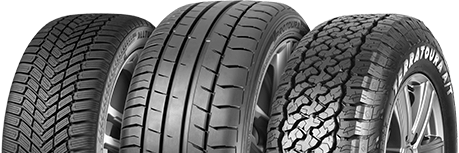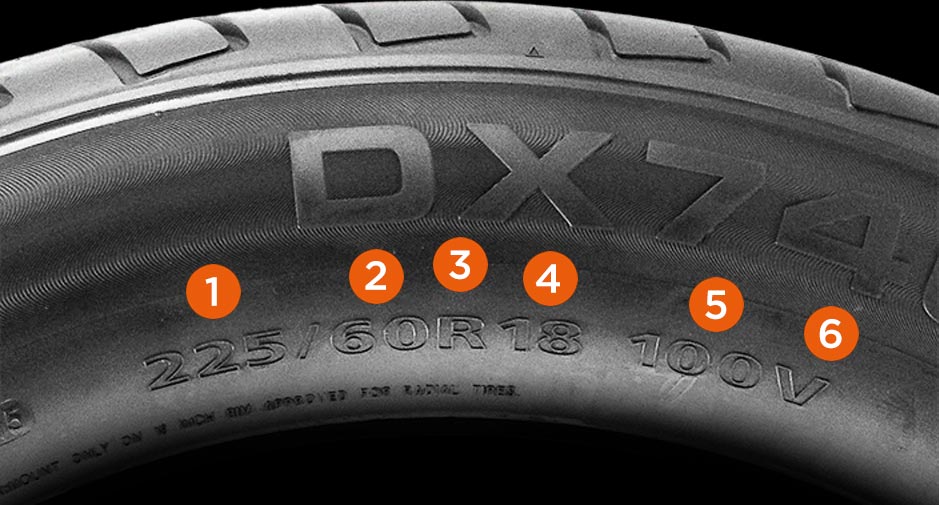
Demystifying EU Tyre Labels
Thursday 6th June 2024Tyre labels may look confusing to the untrained eye – but they really are there to help us all. The EU tyre labels enable drivers to understand how the tyres they are buying will perform on the road during different conditions.
Ultimately, they help consumers make an informed decision before making a purchase. So, here at Davanti Tyres, we want to demystify tyre labels so every driver can use them advantageously….
Why do we have EU tyre labels?
To ensure all drivers can make a well-versed decision on which tyre is right for them, the European Commission introduced tyre labels in Europe in 2012. The ruling requires each passenger car tyre, SUV tyre and van tyre to have a label, providing clear information on tyre performance.
What do the tyre labels disclose?
Every tyre is marked on the following important areas:
- Rolling resistance
- Wet grip
- Noise
- Supplier’s name
- Tyre size
- Tyre Class
Icons for tyres suitable for severe snow conditions and grip on icy roads
What do tyre labels look like?

In May 2021, EU regulations were updated to add extra information to the labels to further help consumers.
In the next section, we’ll take a look at EU tyre labels and help explain what the key icons mean.
- 1. QR Code

The inclusion of a QR code provides easy access to product details in the public part of the EU product database. The code can be scanned and grants access to product information sheets and European tyre labels
- 2. Fuel efficiency icon

Tyres account for up to 20% of your vehicle’s fuel consumption, so this icon is one to take note of! Depending on the tyre’s rolling resistance, its fuel efficiency will range from class A, which indicates the best fuel economy all the way through to class E, delivering the worst fuel economy. Simply put, fuel-efficient tyres require less energy to roll.
- 3. Wet grip rating icon

‘Wet grip’ is the tyre’s ability to stick to the road in wet conditions. The EU rating focuses only on one aspect of wet grip – the wet braking performance of the tyre. The performance is graded between class A and class E. Tyres with a high wet grip rating will stop more quickly on wet roads when full brakes are applied. In an emergency situation, a few metres can make all the difference.
- 4. Noise rating icon

The EU tyre ratings also consider the exterior noise a tyre generates while driving. By choosing a tyre with a good noise rating you can lower the impact of your driving on the surrounding environment. The noise level is sorted into class A, B or C. The rolling noise of the tyre is measured in decibels and the exact number is shown in the bottom part of the label.
- 5. The severe snow tyre icon

The snow tyre icon shows, if a tyre is suitable for severe snow conditions. It bears a three-peak mountain snowflake symbol (3PMSF) that is incorporated in the sidewall of such tyres.
- 6. The severe ice tyre icon

The symbol of an ice stalagmite indicates that a tyre provides a shorter braking distance on ice covered roads in winter.
It’s important to note tyres that are classified as POR (Professional Off-Road) are exempt from tyre label information. For example, mud terrain tyres that are road-legal sit outside of the classification system and as a result will not show the tyre wet grip rating, tyre fuel efficiency and tyre noise ratings.
Every new Davanti Tyre you can purchase will have its very own EU Tyre label from passenger tyres – such as the DX390, performance tyres, to commercial tyres including the Vantoura 4-Seasons – with its tyre label and information sheet available on our product pages.
And now, thanks to this information, you’ll be able to make sure you buy the right tyre for your driving needs.
If you have more questions on EU tyre labelling, contact your local Davanti dealer here.









